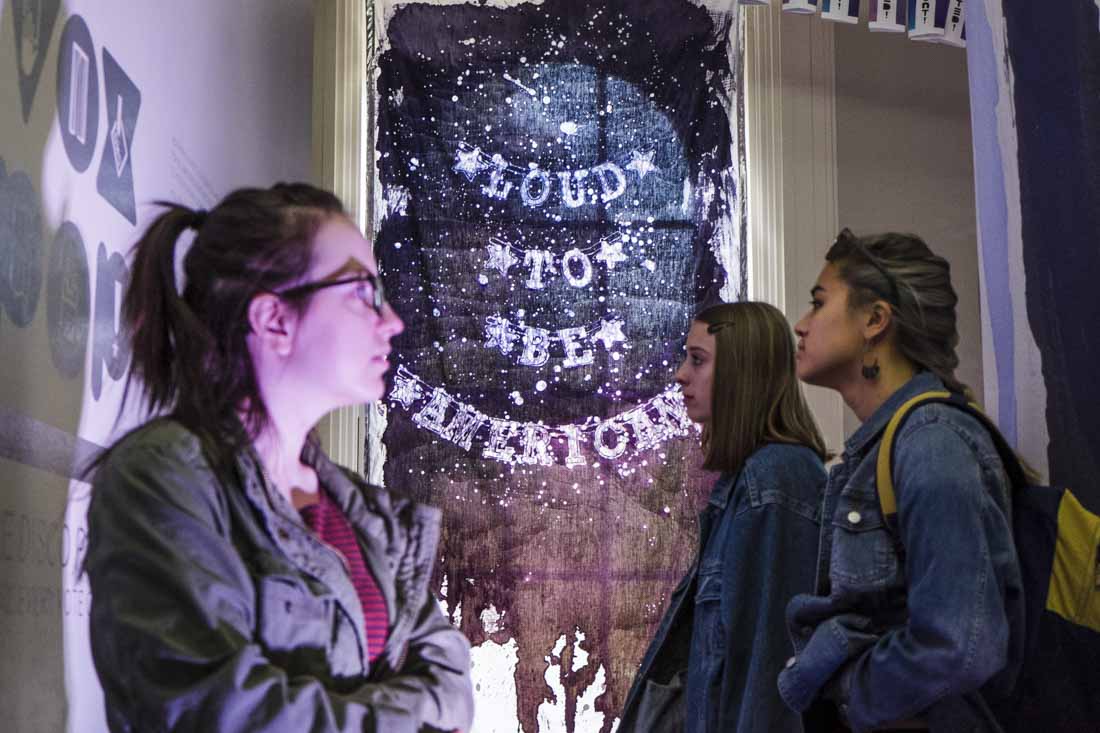By Pat Nabong
On the days leading up to the election, ex-offenders, permanent residents, tourists, disenfranchised voters, Mexicans and immigrants who couldn’t legally vote were able to cast their ballots in unofficial voting stations. And on the night that Donald Trump became president-elect, Hillary Clinton won the unofficial election.
Official Unofficial Voting Station: Voting for All Who Legally Can’t is an art piece by Aram Han Sifuentes and collaborating artists and activists in cities across the U.S. They installed unofficial polling stations in universities and galleries in Mexico City; Chiapas, MX; Ithaca, NY; Los Angeles; Mt. Vernon, WA; South Seattle; ; Detroit; Cortland, NY; Baltimore; Philadelphia and at three sites in Chicago. The binational installations culminated on election night when more than 2,000 ballots were counted.
Through the exhibit, Sifuentes, who was born in South Korea and moved to the U.S. in 1992, wanted to start a conversation about people who are disenfranchised.
[vimeo 190938635 w=474]
“I’m not a citizen so I can’t vote,” said Sifuentes. “And all the stuff that’s being talked about right now, I’m just like, I really want to vote because so much of what’s been talked about directly impacts me and communities of the disenfranchised, so [I’m] kind of feeling that the stakes are so high. I want a voice. But we, the disenfranchised, have no voice. We are a silent population at this time.”
More than six million people cannot vote due to felony convictions in various states, according to The Sentencing Project. The Sentencing Project also estimated that over 7 percent of adults in Alabama, Florida, Kentucky, Mississippi, Tennessee and Virginia are disenfranchised due to various reasons. Voter ID laws also disenfranchise hundreds and thousands of voters across the U.S., according to the Brennan Center for Justice.
“There also are laws that specifically suppress and oppress certain communities. It’s also important to talk about that and to give a space for everybody to be able to vote and not be oppressed,” said Sifuentes.
International student Won Sik, who wants to become a U.S. citizen someday, has been a staunch supporter of Hillary Clinton even before he came to the U.S. Voting on election day at the unofficial polling station installed at the Museum of Contemporary Art in Chicago made him feel like he was participating in democracy, which is what the country is built on, said Sik.
For Emilio Rojas and Matias Armendaris who hail from Mexico, voting at the Official Unofficial Voting Station was an important, symbolic moment for people like them who couldn’t cast an official ballot in this election.
“I think it’s important for people who cannot vote for many different reasons whether they’re not legally in this country or, as ourselves, we’re [international] students, but we can’t vote although this election really affects us,” said Rojas.
Even eligible voters supported the idea.
“There’s plenty of people who do not [have the right to vote] and often they still get taxed, and we as a system believe that taxation without representation is important but we don’t have everybody being represented in our government,” said student Jose Peña, a registered voter. “A right to vote is sort of like this way to…get involved within the government without having to be part of the government. And then by voting you help influence the way our society moves forward or how it changes in general.”
Although their ballots did not count, participants hoped this would start a conversation about the minority that does not want to be silent.


